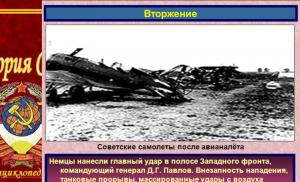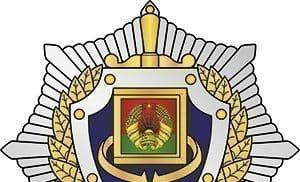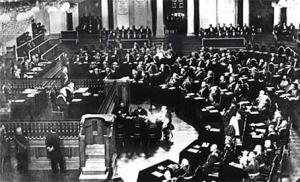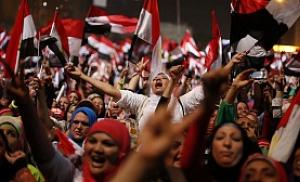Convergence of accounting and management accounting. Management Accounting
When setting up and automating management accounting, companies quite often encounter situations where certain business transactions are reflected in accounting in such a way that this does not correspond to reality. In all such cases, it is necessary to build a management accounting system in such a way that it provides the manager with reliable information and helps to make effective decisions.
At the same time, we are not necessarily talking about the banal differences between accounting and management accounting associated with the existence in many companies of so-called official and unofficial operations.
This article will consider an example of such a situation when business transactions should be reflected differently in accounting and management accounting.
So, there is a company (hereinafter referred to as the "Company") that is engaged in absolutely official business (in which particular industry it does not matter in this case), submits all the necessary reports, pays taxes, etc. In order to somehow minimize the risks for its business, the Company created a separate legal entity (hereinafter referred to as the "Legal entity"), to which the most expensive non-current asset, real estate, is registered. The Company itself occupies only part of the premises in its office, and leases the rest.
There is a management company (MC), which provides services for the maintenance and maintenance of the entire office owned by the Company. The Management Company formally leases office premises from the Legal Entity, which (as already noted) is essentially the balance holder on which the Company's real estate is registered. The management company leases part of the office premises, receiving money from tenants for this. Usually, the Company transfers to the MC an amount S 1 that is obviously larger than the total amount of maintenance and service costs (S 3 +S 4). After some time, the Management Company transfers to the Company's cash desk the difference between the amount S 5 equal to the amount received from the Company and the tenants minus the amount paid to the Legal Entity and the costs of maintaining and maintaining the office.
The scheme of financial flows is presented on figure 1. Thus, in essence, the management company makes money by providing services for maintaining and maintaining the office, but at the same time, contracts with all tenants (including the Company) are drawn up on the management company and, accordingly, all lease payments go through the management company. Therefore, the MC must settle with the Company, taking into account all payments that go through the MC, as well as taking into account the cost of the MC's services for maintaining and servicing the office.
Rice. 1. Scheme for the provision of services and financial flows for the lease and maintenance of the office
Why such an intricate scheme turned out in this case is not discussed (as they say, it happened historically). The problem arises: how to properly set up a management accounting system.
One of the most important issues that needs to be worked out at the very beginning is the concept of management accounting.
As you know, there are two main concepts of management accounting:
It is clear that it is possible to somehow combine these two concepts. One possible combination might look like this: For the formation of management reporting, most of the information is taken from the accounting database (hereinafter referred to as "base 1"). And information on those operations that should be reflected in accounting and management accounting in different ways is taken from a separate database (hereinafter referred to as "base 2").
Those. the conceptual scheme of automation of management accounting in the Company will look as shown in figure 2.
Thus, the accounting of the operations themselves is carried out in two databases with the help of a certain accounting program of the transactional type. And management reporting is generated using a special analytical add-on - BI-module (Business Intelligence).
At the same time, when setting up the management accounting model in the BI module, you will need to remember that not all operations from base 1 should be reflected in management accounting. Information on some operations should be taken from base 2. Obviously, the BI module should allow such settings. An example of a description of such settings and the very concept of automating data from several databases can be found in the article "Automation of budgeting and management accounting in a group of companies" .
Rice. 2. An example of a conceptual scheme for automating management accounting in the Company
So, a list of all operations that arise in the process of providing services for renting and maintaining an office is presented in table 1.
Table 1. Rental and maintenance operations of the Company's office
Operation |
primary document |
Accounting |
Management Accounting |
Consolidated management reporting * |
||||
ODR |
ODDS |
OBL |
||||||
Transfer of money from the account of the Company to the UK |
Company account statement |
Office rental advance |
Transferring money to the UK |
Payments (without specifying the item or under the item “Money Transfer”) |
Cash: - S 1 Advances issued: + S 1 |
|||
Recognition of expenses under the Criminal Code (on the "rent" of the office) |
Act of rendered office rental services |
Occurrence of office rental expenses |
||||||
Recognition of income from renting an office through the management company |
Acts of rendered office rental services |
Income from renting an office |
Income: + S 5 (element "Leasing out premises" in the directory "Other income and expenses") |
Accounts receivable: + S A Profit: + S A |
||||
Receipt of money to the account of the legal entity from the management company |
Extract from the account of the legal entity |
Partial receipt of money from the lease of the fis |
Receipts: + S 2 (element "Other income from operating activities" in the directory "Articles of DDS") |
Cash: + S 2 Accounts receivable: - S 2 |
||||
Recognition of costs for the maintenance of the office (core activity) |
Occurrence of expenses for the maintenance of the office (main activity) |
Expense: - S 3 (element "Maintenance and maintenance of the office" in the directory "Costs") |
Advances issued: - S 3 Profit: - S 3 |
|||||
Recognition of office maintenance costs (non-core activity) |
Calculation of the cost of maintaining and maintaining the office |
Occurrence of expenses for the maintenance of the office (non-core activity) |
Expense: - S 4 (“Maintenance and maintenance of leased premises” in the directory “Other income and expenses”) |
Advances issued: - S 4 Profit: - S 4 |
||||
Receipt of money at the cash desk from the Criminal Code |
incoming cash warrant |
Receipt of money from the UK |
Receipts (without specifying the item or under the item "Receipt of money") |
Cash: + S 5 Advances issued: - S 5 |
||||
* ODR - statement of income and expenses (financial result), ODDS - statement of movement Money(financial flows), OBL - balance sheet report (financial position).
S 5 \u003d S 1 + S A - S 2 - S 3 - S 4
First operation: transfer of money from the Company to the MC
Dt 60.2/76.5 Kt 51
In the directory "Articles of DDS (cash flow)", the element "Payment of rent and maintenance" is selected.
Note: in the "Suppliers 2" folder, all counterparties are recorded, transactions for which are reflected in accounting and management accounting in different ways. If all such suppliers are collected in one folder, then in the future it will be much more convenient to set up a consolidated management accounting model in the BI module.
This operation from base 1 will not be taken into account when generating management reporting.
Rice. 3. Selecting the line type "Journal of transactions" for the item "Cash payments" for setting in the BI-module (on the example of PC "INTEGRAL")
Rice. 4. Setting restrictions on the corresponding account when setting up the item "Cash payments" (on the example of PC "INTEGRAL")
Dt 76.5 Kt 51
No element is selected in the "DDS Articles" directory, because this transfer of money does not yet make any economic sense (or you need to add some new article to the "DDS Articles" directory, for example, "Money Transfer" and select this element during the operation).
In the directory "Settlement accounts" the element "r / s of the Company" is selected.
Second operation: recognition of CM costs
This transaction is reflected in base 1 as follows.Dt 44.1.1 Kt 60.1/76.5
In the directory "Costs" the element "Office rent" is selected
In the directory "Contractors" the element "MC" is selected, located in the folder "Suppliers 2".
This operation will not be taken into account in the formation of management reporting.
To do this, you will need to make the following settings in the BI module:
Rice. 5. Selecting the line type "Journal of postings" for the article "Operating costs" for setting in the BI module (for example, PC "INEGRAL")
Rice. 6. Setting restrictions on the corresponding account when setting up the item "Operating costs" (on the example of PC "INEGRAL")
In base 2, this operation is not reflected in any way, because. it makes no economic sense.
Third operation: recognition of income from renting an office through the management company
In base 2, this operation will be reflected as follows.
Dt 76.5 Kt 91.1
In the reference book "Other income and expenses", the element "Leasing out premises" is selected.
Fourth operation: receipt of money to the account of the Legal entity from the management company
In base 1, for obvious reasons, this operation is not reflected in any way.In base 2, this operation will be reflected as follows.
Dt 51 Kt 76.5
In the directory "Articles of DDS", the element "Other income from core activities" is selected.
In the directory "Settlement accounts" the element "r / s of the Legal entity" is selected.
Fifth operation: recognition of costs for the maintenance of the office (main activity)
The costs of maintaining and maintaining the office in the management accounting of the Company are divided into two groups:That part of the maintenance and service costs related to the premises occupied by the Company is classified as operating costs.
And all other costs are related to non-core activities - in this case, to renting out premises.
This will allow to allocate the financial result for the main and other activities.
In base 1, this operation (for the main activity), for obvious reasons, is not reflected in any way.
In base 2, this operation will be reflected as follows.
Dt 44.1.1 Kt 76.5
In the directory "Costs" the element "Maintenance and maintenance of the office" is selected.
Sixth operation: recognition of costs for the maintenance of the office (non-core activity)
In base 1, for obvious reasons, this operation is not reflected in any way.In base 2, this operation will be reflected as follows.
Dt 91.2 Kt 76.5
In the reference book "Other income and expenses", the element "Maintenance and maintenance of leased areas" is selected.
Seventh operation: receipt of money at the cash desk from the Criminal Code
In base 1, for obvious reasons, this operation is not reflected in any way.In base 2, this operation will be reflected as follows. v Dt 50.1 Kt 76.5
No element is selected in the "DDS Articles" directory, because this receipt of money does not make any economic sense (or you need to add some new article to the "DDS Articles" directory, for example, "Receipt of money" and select this element during the operation).
Summary
Thus, the use of the approach proposed in this article will provide the head of the Company with up-to-date management reporting that adequately reflects the business transactions performed.Moreover, management reporting will be generated in an automated form. It will not be necessary, as before, to conduct any special calculations in spreadsheets, so that later, with the help of not very obvious manipulations (in which there may be errors), it will be necessary to generate the necessary reports for the manager.
If you correctly organize the accounting procedure itself in two databases in accordance with the accounting and management accounting policy, as well as automate the management accounting model, then all the necessary management reports will be generated without errors and really reflect the picture of the events taking place in the Company.
1C: Enterprise, version 8.0. Salary, personnel management Boyko Elvira Viktorovna
16.10. Ways to reflect salaries in management accounting
Methods for reflecting salaries in management accounting allow you to:
Reflect for a given cost item with “automatic substitution” of some data that are known in payroll accounting: an employee of an enterprise and a division of an enterprise.
Reflect for those cost items for which the base accruals were reflected: the so-called. reflection method "proportional to the base".
Ways of reflecting salaries in management accounting are implemented in the form of a reference book, which contains two predefined ways of reflecting in accounting:
Reflection of accruals by default;
Do not reflect in management accounting.
The method of reflection in management accounting (i.e. a link to the element of the directory of reflection methods) can be set:
For a specific employee - established by the document Accounting for employees' earnings or can be further specified by personnel documents, for example, when an employee is transferred to another job by personnel transfer;
To a specific accrual - it is indicated directly in the description of the accrual.
In management accounting, the reflection method will be selected in the above sequence. If no method was found for accrual in the above three paragraphs, then the default reflection method is selected.
From the book Accounting author8.2. Choosing the best option for solving economic situations, the procedure for their reflection in accounting and reporting The theory of accounting allows an organization to choose, at its discretion, the best possible alternative methods accounting, which
From the book Accounting author Melnikov IlyaLEASING OPERATIONS AND THEIR RECORDING IN ACCOUNTING The object of leasing is any movable and immovable property that, according to the current classification, is classified as fixed assets. The subjects of leasing are: – the lessor – entity leasing company
From the book Enterprise Cost Management author Koteneva E N5.3. Cost in financial and management accounting The cost of production plays a crucial role in the production activities of an enterprise, industry, and the entire national economy. Production cost shows efficiency
From the book Accounting in agriculture author Bychkova Svetlana Mikhailovna13.5. The concept of financial results and the procedure for their reflection in accounting The financial result is an estimated indicator and expresses the economic efficiency of the agricultural enterprise. This indicator is determined by the indicator of profit or
From book Accounting policy organizations for 2012: for the purposes of accounting, financial, managerial and tax accounting author Kondrakov Nikolai PetrovichChapter 8 Accounting policy of the organization in management accounting 8.1. The main regulatory documents used in management accounting 1. Federal Law of November 21, 1996 No. 129-FZ “On Accounting”.2. Regulation on accounting and financial reporting in
From the book Management Accounting. cheat sheets author Zaritsky Alexander Evgenievich8.1. The main regulatory documents used in management accounting 1. Federal Law of November 21, 1996 No. 129-FZ “On Accounting”.2. Regulation on accounting and financial reporting in Russian Federation(approved by order of the Ministry of Finance of Russia dated
From the book Common Mistakes in Accounting and Reporting author Utkina Svetlana Anatolievna26. Principles and objectives of the organization of the budgeting system in the management accounting of the enterprise The budgeting system is an integral part of the enterprise planning system. Traditionally, the budget was understood as a financial plan, which has the form of a balance sheet.
From the book Fixed Assets. Accounting and tax accounting author Sergeeva Tatyana Yurievna44. The concept and classification of costs in the management accounting of an enterprise A clear delineation of costs depending on their economic purpose is a defining moment in the organization of management accounting in an enterprise. At all levels of management
From the book 1C: Enterprise, version 8.0. Payroll, personnel management author Boyko Elvira Viktorovna54. The use of direct costing in management accounting The term "direct costing" (direct-costing) means "accounting for direct costs". This term does not fully reflect the essence of this cost accounting method, since the main element of this method is the organization
From the book Accounting and tax accounting of profit author Nechitailo Alexey Igorevich55. Use of the standard costing system in management accounting Standard costing is a system of cost accounting and costing using standard costs. "Standard" - the number of costs necessary for the production of a unit of output;
From the author's bookExample 25. The procedure for reflecting land plots in accounting
From the author's bookExample 12. An organization has violated the procedure for recording in accounting and tax accounting the surplus of goods identified during the inventory. Reflection in tax accounting as part of the cost of purchased goods sold, the accounting value of the surplus sold is
From the author's bookexample 16
From the author's book4.1. Methods of calculating depreciation in accounting The amount of depreciation is determined monthly, separately for each object of depreciable property. Depreciation begins on the 1st day of the month following the month in which this object was introduced
From the author's book16.9. Ways of reflecting salaries in regulated accounting Ways of reflecting are implemented in the form of a reference book, which contains two predefined methods:? reflection of accruals by default;? do not reflect in accounting. The method determines the procedure for reflecting salaries
From the author's book1.4. Concepts of formation and reflection of profit in accounting Formation of information on financial results is based on a set of conventions, many of which have nothing to do with the reality around us. In accounting these
It is no secret that many enterprises enter into a lot of fictitious contracts, which lead to a formal underestimation of income and profit, overestimation of costs and prime cost. Accounting for entries under these contracts complicates and confuses the picture of real business processes not only for regulatory authorities, but also for the company itself. As a result, on the basis of such reporting, it is impossible to analyze and make informed decisions, therefore, in parallel, “black”, or real, accounting is created, which tries to adequately reflect the actual state of affairs. Quite often, "black" accounting is transformed into management accounting, developing original software to support it.
More recently, the concept of “management accounting” existed in Russia only in the literature, and every entrepreneur managed his business as best he could, knew how and wanted. In small firms, this was expressed in direct observation and influence on the part of the head, who himself delved into all the details, independently made almost all decisions, knew all the employees by sight, in a word, was always aware of everything.
As businesses grew and failed, entrepreneurs learned from their mistakes, and the term "management accounting" began to come into vogue. However, how it differs from accounting, many have not figured out to this day.
Management accounting (from English management accounting) arose at the junction of two cultures - financial accounting and management. Management has always needed information, but financial accounting, as the business environment evolved and became more complex, gave managers less and less of the information they needed. Therefore, management accounting arose not just in the development of accounting, but as a new independent discipline. Management accounting uses not only actual data on completed transactions, but also analytical, estimated data, as well as data on possible future events (plans and budgets), provides the manager with not only quantitative, but also qualitative (informal) information.
Another important difference between management accounting and accounting is the absence of any single standard: management accounting is individual for each enterprise. Each enterprise has its own goals, strategies, priorities, interests, values, culture, traditions, which differ from the same set of attributes in other enterprises. Each company has its own business process structure, organizational structure, features in business management, the system of distribution and transfer of responsibility, problems. Therefore, there is no force that can force the majority of enterprises to comply with any standard in business management. Nevertheless, in management and, as a result, in management accounting, certain principles, approaches and methods have been formed, the effectiveness of which is almost beyond doubt.
Our expertise
O.A. Baskakova, accountant-auditor
When the need to introduce management accounting is obvious, but the head of the company wants to save on salary costs and refuses to attract highly paid specialists, the accountant has to look for a way out of this situation alone.
First of all, it is necessary to understand that management accounting is integrated system identification, measurement, accumulation, analysis, preparation, interpretation and presentation of information necessary for interested internal users to plan, evaluate and control economic activities, in other words, on-line operational information for internal users of the organization (directors, managers, accountants, shareholders) with elements of analytics.
The tasks of management accounting are:
Formation of complete and reliable information about the activities of the organization and its property status;
Control of the availability and movement of property and liabilities, reasonable use of material, financial and labor resources in accordance with approved standards and budgets;
Maximizing the profit of the company and maintaining it at a satisfactory level;
Providing management with timely and complete information for making management decisions;
Prevention of negative results of economic activity.
BASIC PRINCIPLES OF COMPLETE ACCOUNTING
In the reflection of financial and economic operations in management accounting, the basic principles are:
Completeness - timely reflection of information on business transactions in full;
Timeliness;
credibility;
Prudence - a greater readiness to recognize expenses, losses and liabilities than possible income and assets, while at the same time avoiding hidden reserves;
The priority of content over form is the reflection in accounting of the facts of economic activity, based not so much on their legal form, but on the economic content of the facts and conditions of economic activity.
ATTENTION
The reporting period for management accounting is a calendar month.
To reflect business transactions in the management accounting of the company, the accrual method is to be applied - recognition of the results of transactions and other events, as well as their accounting and reflection in the reporting, in the reporting period when they occurred, regardless of the time of actual receipt or payment of funds or their equivalents.
Management reporting prepared on an accrual basis informs internal users:
About past operations related to the payment and receipt of funds;
On the obligations of the company, entailing the payment of funds in the future;
About resources that may be available in the future.
Document flow rules and accounting information processing technology must be disclosed in the Accounting Policy Regulations.
All business transactions carried out at the enterprise must be documented with supporting documents, on the basis of which information on completed business transactions is subject to reflection in accounting registers, therefore it is completely pointless to reflect in management accounting information on business transactions that are not confirmed by supporting documents.
Documents of financial (accounting) accounting may be accepted for accounting if the information contained in them fully characterizes the completed business transaction. In other cases, management accounting documents should be accepted for accounting.
The primary management accounting document must contain the following mandatory details:
Name and date of compilation;
Name of company;
Name of the business transaction counterparty;
Measuring instruments of business transactions, in physical and monetary terms;
Personal signatures of the head and accountant-analyst.
THE DOCUMENTS
A type of primary management accounting document is an electronic document received (or sent) by one company to another via electronic means of communication. A prerequisite for attaching an electronic document is the ability to identify the sender by an encoded digital signature.
Management accounting documents are subject to compilation at the time of the transaction, and if this is not possible, immediately after the completion of the transaction.
ACCOUNTING REGISTERS
Accounting registers are designed to systematize and accumulate previously identified information. The main systematizing one is a synthetic register based on the Working Chart of Accounts, where accounting is carried out using the double entry method.
To obtain information detailed by various signs of accounting objects, analytical accounting registers are used that are interconnected with the accounts of a synthetic register.
Working chart of accounts:
Developed by the organization itself;
It is fixed in the Regulations on Accounting Policy for Management Accounting;
Contains complete list accounts (including sub-accounts) with a description of analytical registers (or other objects) assigned to each account.
Information in accounting registers is subject to reflection in chronological order with a mandatory reference to primary accounting documents.
For reflection in management accounting and reporting, property, liabilities and business transactions are valued in monetary terms in the main currency of management accounting - Russian rubles (hereinafter - the main currency) or in any other currency that suits the company (dollars, euros, etc.).
When carrying out transactions with property and obligations denominated in a currency other than the main one (hereinafter referred to as the other currency), entries in accounting registers are made both in the main and other currencies. In this case, the amount of the transaction in the main currency is determined by converting the other currency at the appropriate rate set by the Central Bank of the Russian Federation on the date of the transaction.
In order to ensure the reliability of management accounting data, it is recommended to conduct an inventory of property and liabilities at least once a year.
The procedure, types and timing of inventories are subject to indication in the Regulations on Accounting Policy.
ACCOUNTING PLAN
First, the accountant needs to develop a plan according to which accounting will be carried out. It is most appropriate to start with the Accounting Policy, as in other, more familiar types of accounting.
Here is an example of an accounting policy for management accounting:
POSITION
on Accounting Policies for Management Accounting Purposes
1. Accounting operations for property and liabilities that are not regulated by regulatory documents on the Company's management accounting are subject to reflection in accordance with the current legislation on financial (accounting) accounting of the Russian Federation.
2. Management accounting is based on compliance basic principles management accounting - completeness, timeliness, reliability, prudence, priority of content over form.
3. A calendar month is recognized as a reporting period for management accounting.
4. To reflect business transactions in management accounting, the Company should apply the accrual method - recognition of the results of transactions and other events, as well as their accounting and reporting in the reporting period in which they occurred, regardless of the time of actual receipt or payment of funds or their equivalents.
5. Documents of financial (accounting) accounting may be accepted for accounting if the information contained in them fully characterizes the completed business transaction. In other cases, management accounting documents should be accepted for accounting.
6. To accept an asset as a fixed asset, its evaluation and accounting, one should be guided by PBU 6/01 “Accounting for Fixed Assets”.
7. Accrual of depreciation of fixed assets to produce a linear method.
8. The useful life of each asset is set in calendar months in accordance with the Classification of fixed assets included in depreciation groups, approved. Decree of the Government of the Russian Federation of 01.01.02 No. 1 (hereinafter referred to as the Classification). At the same time, the useful life is recognized as the minimum period established by the Classification for the group of fixed assets to which each object belongs.
9. Fixed assets worth no more than 10,000 rubles. subject to 100% depreciation at the time of their commissioning.
10. Intangible assets include objects that meet the conditions of PBU 14/2000 “Accounting for intangible assets”. Assessment and accounting of intangible assets are carried out in accordance with the specified RAS.
11. For management accounting, the cost of goods (services) purchased or produced for sale shall be formed solely on the basis of variable costs.
12. fixed costs(direct and indirect) are recognized as expenses of the reporting period and are subject to write-off to the financial result at the time of their occurrence (accrual).
13. Direct costs are those that can be accurately and uniquely attributed to cost centers.
14. Indirect costs are those that arise in several places and are subject to distribution between them in some acceptable way.
15. The company has the right to create reserves:
For uncollectible receivables;
Employee bonuses;
For costly repairs.
REMEMBER
Accounting policy for management accounting purposes can be drawn up taking into account the characteristics of the organization, depending on the chosen taxation system (the example shows the Accounting policy for the general taxation system). If the organization has switched to a simplified taxation system or single tax on imputed income, it is more expedient to build management accounting “on payment”.
The next stage in the organization of management accounting, as a rule, is the definition of goals, for which it is necessary to clarify with the company's management what exactly they are interested in: income, expenses, profit, loss, or all indicators in combination. Most often, in practice, managers are interested in everything: how much they earned, how much they spent, what is the economic result. To reflect the activities of the enterprise, an Income and Expenditure Budget (BDR) is drawn up.
When forming a budget, it is necessary not only to see the actual costs, but to compare them with planned figures, on the basis of which it is possible to analyze budget items, identifying positive and negative factors affecting the financial and economic activities of the organization.
Expenses and incomes can be grouped into general items, you can also break them into groups, break groups into articles, etc.
As a result of budgeting income and expenses, management will have a real opportunity to assess the financial condition of the enterprise
Management Accounting- this is an ordered system for collecting, registering, summarizing and presenting information about the economic activities of the organization and its internal structural divisions, necessary for making management decisions.
Information requirements for management accounting
There are a number of specific requirements for information for internal management. She must be:
operational, formed on the principle of "the sooner the better." The minimum accounting period of one month is unacceptable for most management tasks. If there is a choice between accuracy and speed of obtaining data for management, the manager will usually prefer the latter;
target, i.e. aimed at solving specific management problems;
targeted, having a focus on a specific consumer - the manager and the tasks he solves. Targeting should take into account the level of the official hierarchy of officials in the organization's management apparatus;
sufficient. Management accounting information should not be redundant, but quite sufficient for making appropriate decisions. Its sufficiency is largely ensured by the analyticity of the data or the possibility of their use in economic analysis. This allows, with a certain limitation of the initial indicators for management, to widely use their derivatives, the results of analytical calculations, groupings, comparisons, etc.;
economical to obtain and use;
flexible, adapted to the possibilities of changes in the business. The market economy is distinguished by the dynamism of development, the uncertainty of many economic situations, and their multivariance. Accordingly, the management accounting system should not be stable, unchanged for many years. On the contrary, it should be subjected to constant renewal, improvement and development in form, scope and content.
What does management accounting provide?
Well-designed management accounting:
contributes to the success of enterprises;
provides a high rate of strategic development;
allows management to quickly receive the necessary accounting and analytical information;
provides the organization with competitive advantages through cost management, business operations and general management organization;
structures different types and directions of activity of the enterprise;
provides an assessment of the contribution to the final result of various structural units.
Strategic and current management accounting
According to the intended purpose, management accounting systems can be divided into strategic accounting for the top management of enterprises, companies, firms and current accounting for internal management.
Goals of management accounting
The main goal of management accounting is the preparation of planned, actual and forecast information about the activities of the organization and its external environment to make the necessary management decisions.
Users of management accounting information
The main users of management accounting information are senior managers, heads of structural divisions and specialists.
Senior managers are usually provided with:
management information in the form of reports on the results of the production, financial and investment activities of the organization and its structural divisions for a specific period of time and for the past;
analysis of the impact of identified internal and external factors on the performance of the organization and its main structural divisions;
planned and forecast indicators for future periods.
Heads of structural divisions are provided with:
management reports on the activities of units at a specific point in time;
planned and forecast information about the divisions, as well as the necessary information about the counterparties of the organization.
Specialists receive the necessary information about the activities of the organization and its structural divisions, as well as forecasts of the impact of identified internal and external factors on the results of the economic activity of the enterprise.
Objects of management accounting
The objects of management accounting include:
1. The costs of the enterprise and its structural divisions.
2. Results of economic activity.
3. Internal pricing.
4. Forecasting future financial transactions.
5. Internal reporting.
Tasks of management accounting
The main task of management accounting is the preparation of internal reports, the information of which is intended for the owners of the enterprise (organization) and the management apparatus.
These reports should contain information about the general financial position of the enterprise, the state of affairs in production activities.
The information that is necessary for making managerial decisions, controlling and regulating managerial activities can include, for example:
selling prices;
production costs;
demand, competitiveness, profitability of goods produced by their enterprise.
The main tasks of management accounting are:
analysis of the state of material, labor and financial resources and compilation of information on these resources;
analysis of costs and revenues and deviations from established norms and estimates;
calculation of various indicators of the actual cost of products (works, services) and deviations from standard and planned indicators;
calculation of the financial results of the activities of individual structural divisions by responsibility centers, products sold, work performed and services rendered;
control and analysis of the financial and economic activities of the organization, its structural divisions and other responsibility centers;
planning the financial and economic activities of the organization as a whole, its structural divisions and other centers of responsibility;
providing information on the impact of expected future events based on an analysis of past events;
presentation of management reporting for making the necessary management decisions in the future.
management accounting requirements
The information generated by the management accounting system must meet the following requirements:
authenticity. Reliability is understood as the ability for a competent user to draw correct conclusions based on accounting and reporting data;
completeness. The completeness of management accounting means the sufficiency of information for the management of the enterprise and its divisions, the ability to ensure this sufficiency. The most complete are management accounting systems, including the use of accounts and double entry, providing control not only over the costs and results of current activities, but also over inventories, investments, and the effectiveness of functional business management;
relevance. Relevant from the standpoint of making a management decision are data and information that takes into account the conditions in which the decision is made, its target criteria, which have a set of possible alternatives and characterize the consequences of the implementation of each of them;
integrity. This means that management accounting must be systemic even when it is maintained without the use of primary documentation, accounts and double entry. Consistency in this case means the unity of the principles for reflecting accounting information, the relationship of accounting registers and internal reporting, ensuring, if necessary, the comparability of its data with accounting and reporting indicators;
clarity. The clarity of management accounting information is ensured by reflecting in the accounting registers the results of the analysis of the obtained indicators, presenting data in the form of analytical tables, graphs, time series, etc.;
timeliness. The timeliness of management accounting means its ability to provide managers with the necessary information by the time of decision-making;
regularity. It is also important that internal reporting be regular; repeatable in time.
Thus, the data of well-organized management accounting make it possible to identify areas of greatest risk, bottlenecks in the organization's activities, inefficient or unprofitable types of products and services, places and methods for their implementation.
They are used to determine the most favorable range of products and works for given conditions, prices and tariffs for their sale, discount limits under different conditions of sale and payment, to assess the effectiveness of additional costs and the rationality of capital investments.
Only according to management accounting data, it is possible to choose the best option for solving problems such as: "produce it yourself or buy", "how much is profitable to buy and sell", "what equipment should be ordered", "in what cases is equipment repair better than buying new machines" and etc.
Still have questions about accounting and taxes? Ask them on the accounting forum.
Management accounting: details for an accountant
- Management accounting for the cost of paid services
Practitioners and methodological solutions of management accounting institutions. Management accounting (reflection in accounting ... the most important in the organization of management accounting, since it also fixes the rules ... of inventories), in the management accounting system it is necessary to fix the persons responsible ... policies, revealing the features of management accounting in terms of providing paid ... to note that the task of organizing management accounting has been successfully solved by many educational institutions ...
- How to speed up reporting in retail by automating transformational adjustments
According to IFRS, for example, management accounting can be based. The retail sector is no exception... under IFRS under Russian law); Management accounting and the budgeting system are based on ... such detail is needed, for example, for management accounting. Availability of specialists Transformation of the group of companies...
The leader does not always understand what he is talking about. For example, the balance sheet for him is just a form of reporting, which the chief accountant must draw up and submit to the inspection of the Federal Tax Service. But everything changes when bankers, investors and founders become interested in the activities of the enterprise. Their financial statements are of little concern, they need management accounting data.
Take management accounting into your own hands Dmitry Vasiliev, Chief Accountant, IFRU Fund A manager can't always understand what he's talking about. For example, the balance sheet for him is just a form of reporting, which the chief accountant must draw up and submit to the inspection of the Federal Tax Service. But everything changes when bankers, investors and founders become interested in the activities of the enterprise. Their financial statements are of little concern, they need management accounting data.
Up to the day
The first question that arises is where and how to get them and what are the main requirements for management reporting? There is no universal recipe here and never will be. Each company solves this problem in its own way. First you need to understand what is the value of management accounting. In accuracy, simplicity, practical use? Of course, all this is true, but efficiency still comes first! Even at the expense of accuracy. Yes Yes exactly! If you have ever been engaged in business planning, then you must have made a forecast of cash inflows and outflows (Cash-Flow). According to the same principle, you can build a daily management accounting of the economic activities of the organization. To do this, each transaction with cash and non-cash funds, passing through the currency and ruble accounts of the enterprise and its cash desk, is duplicated by records in management accounting. They have nothing to do with double entry accounting, since only the total amount of the operation matches, and its meaning may be completely different.
Example From the settlement account of the Beta organization, 100 thousand rubles were paid for the goods to the supplier. In the accounting registers, this operation will be reflected as follows: Debit 60 Credit 51- 100,000 rubles. However, for management accounting, the meaning of the operation could be completely different: 90,000 rubles - a bank loan was returned; 10,000 rubles - interest on the loan has been paid.
Now we will explain why only the sum coincided. Such a situation is very likely if there are settlements with a bank that issues "short loans", which pays for the company's goods purchased from foreign suppliers in the amount in euros, thus equivalent to 90 thousand rubles. And your company, after receiving money from buyers, pays for the loan. Or you can interpret this operation as follows: 100 thousand rubles - a loan was issued to a company, which will then be registered in accounting as a supply of goods or services from it.
However, why does the accountant not make the same entries in accounting and what prevents the convergence of management and accounting?
First, management accounting information is not always available to him by his status.
Secondly, accounting is based precisely on the reflection of operations on the basis of only primary documents, this is precisely the value of accounting. In management accounting, there are simply no such primary documents, and this is its main weakness, you can call it business practices.
Thirdly, management accounting “does not know” either VAT or income tax, that is, it has no practical value for regulatory authorities at all.
From the foregoing, we can conclude that management accounting is no more perfect than accounting, it is just different for other user groups, and its main difference from accounting is that no one will be fined for errors in its maintenance. In other words, to each his own.
However, since such accounting still exists, it means that there should be reporting.
On the basis of management accounting data, management reporting is compiled, which should give the user 100% accurate data on the assets and liabilities of the organization (see table 1).
Table 1
|
Type of asset |
The procedure for reflection in accounting or tax accounting |
The procedure for reflection in management accounting |
|---|---|---|
|
fixed assets |
PBU 6/01, Tax Code |
The value of real estate can only be market |
|
Accounts receivable and accounts payable |
Balance on the corresponding accounts of settlements with buyers |
The same balance, but it is likely that other companies act as counterparties, and the receivable or creditor, as in the example, is "washed out" into commodity and credit components |
|
Cash |
Bank and cash balances |
Matches the accounting estimate |
It turns out that only money is evaluated objectively and unambiguously. Accounting is not regulated, but it makes it clear that the same operations have completely different interpretations. But the forms of management reporting are similar to accounting. If there is no difference, then why pay more? Let's give an example of a management income statement for a trading company (see table 2).
table 2
What is the main difference between Form No. 2 of the balance sheet and the management balance sheet? Revenue, like expenses, is also calculated differently than in accounting. As always, the main question is: what to do with VAT? If the income and expenses of the company for the purposes of management reporting are reflected without value added tax, then the determination of income occurs in full accordance with the accounting rules.
Then the question arises of how to build this same management reporting, if the implementation occurs when it is subject to different VAT tax rates, or even at a zero rate. Revenues are designed to show how much money came from the buyer. But the money that came to the current account is subject to VAT or not, it does not matter at all. This position is held by the vast majority of companies compiling management reporting. After all, no one will, for example, discount the amount that came from the buyer with a delay of a month, breaking it down into money that actually came and a commercial loan to the buyer. Showing the company's expenses without VAT paid to suppliers is also quite in the spirit of Russian Accounting Standards. However, in practice, such a tax-free reflection of income and expenses is extremely rare, as it is biased due to the loss of 18 percent of the amount of income or expense. This is not all the problems of building management reporting.
Difficulties in translation
Another task of reporting a trading enterprise is that, due to the high dynamics of the movement of commodity stocks, it is very difficult to establish their real stocks in the company's warehouse. A thorough inventory is necessary, which is impossible without a complete stop of activity. Relying on the data provided by warehouse accounting programs, you are guaranteed to make a mistake, and efficiency is not an advantage, but a disadvantage.
The second point is the definition of the type of receivables, which can be good, bad and very bad, depending on the timing of the occurrence and the order of its repayment. The accounting program of the enterprise will help here, but only if such a filter is installed in it. But these are additional costs and time, which is not there.
If a trading enterprise is a mini-holding of several interdependent organizations, for example, an importer of goods, a wholesaler and a retail outlet, then internal transactions between its participants should be excluded from turnover. This also takes a significant amount of time. Although, in practice, some external users (banks in which they planned to take a company loan), on the contrary, require all the turnover of all firms, without excluding them from the “minority share”. Thus, management reporting, as far as it is not regulated by the law of November 21, 1996 No. 129-FZ and RAS, is just as complex and individual for each type of enterprise. It's just a completely different kind of accounting and extra work. So, it should be paid adequately.
The rate of a specialist in management accounting is in no way less than the salary of a chief accountant. In addition, what only the first persons of the company knew about will be known to an outsider. Hence the conclusion. You, as the director's confidant, have the cards in your hands. If the movement towards management accounting is not stopped, it is better to lead it. According to metropolitan accountants, paying less than 12 thousand rubles for such reporting is simply unfair.
Still, no matter what is said about the importance of management accounting, the main task of the chief accountant is the correct reflection of business transactions in accounting accounts and the calculation of taxes. It is precisely for the distortion of the norms and rules of numerous PBU and the Tax Code that controllers are fined, and the fulfillment of these duties should be focused primarily on.
Dmitry Vasiliev


















